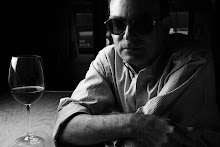Flying dreams are common. And the 1965 movie Those Magnificent Men in Their Flying Machines or How I Flew from London to Paris in 22 hours 11 Minutes plays like one long dream of flight. It takes place in 1910, four years before the beginning of World War I and has the dusky elegiac glow of a last glorious summer in the life of a soon-to-be-fallen empire.
Those Magnificent Men in Their Flying Machines is not an obscure movie. Back in 1965, when it was released, it was a popular success and presented in road show format by 20th Century-Fox, complete with intermission (although completely unnecessary as the movie fails to build to the necessary act one curtain closer). It was also an epic production with fourteen major characters and an almost equal number of working period aircraft. It featured an international cast of dramatic and comedic actors drawn from England (Terry-Thomas, in a role originally intended for Peter Sellers), the U.S. (Stuart Whitman, Sam Wanamaker), France (Jean-Pierre Cassel, pere of Vincent), Italy (Alberto Sordi), Germany (Gert Frobe, Karl Michael Vogler) and Japan. The story concerns a British newspaper-sponsored contest to see which international aviator will be the first to fly across the English Channel from London to Paris—an incredible feat in those pioneering years of aviation.
In the past forty-five years since its initial release, this movie has become something of a forgotten classic. It has been released by Fox as part of its family DVD collection. It is a wholesome movie, to be sure, filmed in 1965, before the censor barriers fully came down, and takes place at a time when public decorum ruled the day. But the movie mildly subverted its family-friendly status by casting two up-and-coming actors, James Fox and Sarah Miles, who had recently appeared together in Joseph Losey’s very adult The Servant (1963), Harold Pinter’s typically enigmatic adaptation of a novel by Robin Maugham (nephew of W. Somerset). Sarah Miles had also played a student who accuses her teacher (Sir Laurence Olivier) of molestation in Peter Glenville’s Term of Trial (1962).
In real life, Miles had affairs with her co-stars, Olivier and Fox, before marrying playwright and screenwriter Robert Bolt (A Man for All Seasons, Lawrence of Arabia), who wrote David Lean's Ryan's Daughter (1971) as a starring vehicle for her. In Those Magnificent Men in Their Flying Machines, she is introduced wearing trousers, a Donegal sweater and Tam o'Shanter while riding a vintage motorcycle. Her character dreams of going up in a flying machine and learning to fly, but her stuffed-shirt aviator fiancé, Fox, won’t let her because he is afraid of angering her press lord father (Robert Morley). Soon after, Miles swaps her tomboy outfit for female finery of the period—long dresses, high-button shoes, very large hats, bloomers (source of a running gag). But even though she is dressed to a period T, there is something irrepressibly contemporary about Miles that animates her character. It is also a little surprising how much she resembles the current Hollywood It Girl, Carey Mulligan. In fact, Miles began her career in 1961, the year after An Education, the movie that won Carey Mulligan an Academy Award nomination, takes place.
In addition to Ms. Miles’ performance, Those Magnificent Men in Their Flying Machines is a rare achievement in other ways as well. For one thing, its special effects hold up very well, even by today’s CGI standards. The movie is a mix of real vintage airplanes (flown by professional pilots), model photography, and actors filmed against a blue screen background or a blue sky backing in the studio. The blue screen shots are notable for not showing the halo around actors that marred so many process shots of the period. The actors actually seem to be flying their own planes. And the model shot of three vintage aircraft whizzing right by the Eiffel Tower is still a jaw-dropping effect. Christopher Challis’ cinematography contributes to the movie’s dreamlike ambience and references some beautiful Rembrandt-like landscapes (into which one or more vintage aircraft have been interposed).
The movie owes a great debt to the silent film comedies of Mack Sennet and is filled with slapstick scenes of airplane crashes and fire trucks racing across the field to rescue pilots. The chief of the airfield’s Keystone Kop-like fire brigade is none other than Benny Hill, several years before achieving fame as a bikini babe-bracketed TV comic and master of the double entendre. (The movie also features a cameo appearance by another famous TV comedian—Red Skelton, playing a caveman who dreams of flying and several other flight-happy incarnations down through the centuries.) But as funny as these scenes are, Daryl F. Zanuck, head of 20th Century-Fox at the time, ordered director Ken Annakin and screenwriter Jack Davies to place in the forefront the love triangle composed of Sarah Miles, Stuart Whitman and James Fox.
Those Magnificent Men in Their Flying Machines came out the same year as Blake Edwards’ The Great Race, a movie about an early automobile race from New York to Paris. It, too, mixes stars (Jack Lemmon, Natalie Wood, Tony Curtis, Peter Falk) with vintage machines—in this case early model automobiles. And in 1969, Fox released a sort of auto-based sequel, the inferior Those Daring Young Men in Their Jaunty Jalopies (again starring Tony Curtis), but this had nowhere near the critical or box office success of its notable predecessor. Those Magnificent Men in Their Flying Machines is a movie just waiting to be discovered by those who enjoy family-friendly entertainment, slapstick comedy, or charmingly-played love triangles. Or for those who dream of flying or wish the summer would never end.
Thursday, July 8, 2010
Subscribe to:
Posts (Atom)
